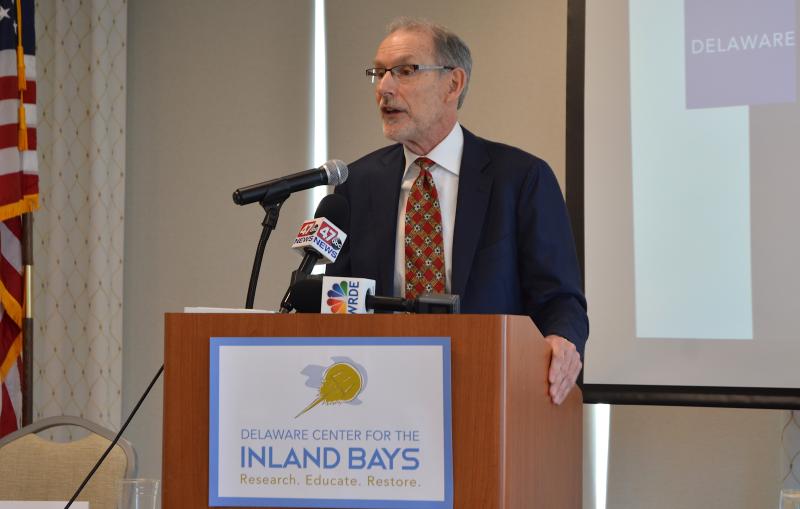Inland Bays water quality given a D grade
For a number of reasons, the Delaware Center for the Inland Bays gave the water quality in the bays a D in its 2016 State of the Bays report.
The water quality received another D in the center’s 2021 report, released March 27. However, some of the reasons have changed.
Much of the recent development has been near the bays, which have essentially eliminated forest buffers, said Dr. Marianne Walch, lead author of the 2021 State of the Bays report and CIB’s science and restoration director emeritus.
There’s been modest signs of recovery, but there’s also been constant threats, said Walch. There’s been a shift from agriculture-related pollution to more urban pollution like stormwater runoff, and there are different approaches needed for both, said Walch.
Walch said there’s been mixed messages on living resources, which serve as frontline indicators on water quality. The populations of osprey, bald eagle and blue crab are stable, but eelgrass no longer grows in the Inland Bays, she said.
The tributaries and canal systems of the Inland Bays is where excess nutrient pollution can be seen most, said Walch. The water quality for the open areas of the bays are relatively healthy, but the tributaries aren’t good for swimming or eating, she said.
CIB Executive Director Christophe Tulou, who took over at the beginning of the year, said he wished he could say all the work was done and everything was rosy. This report serves as a wake-up call, he said.
Pointing to the removal of all major point sources of nutrient pollution and the county’s efforts to move more than 50,000 septic systems to central sewer, Tulou said there has been progress made. Despite all that, he said, the needle on water quality is not moving.
Climate change is happening and the best defense against it are marshes and shorelines that are eroding and disappearing, said Tulou. It would cost billions to replace what the bays do naturally, he said.
Walch added that Little Assawoman Bay has continued to show modest improvements, while the shellfish aquaculture program is a win for water quality and the local economy.
Looking forward, Tulou said the center should be able to increase its efforts because the federal government is doubling its budget and the number of employees. This will allow the center to take a more surgical approach with what gets done and to put resources toward issues, he said.
Adam Ortiz, Environmental Protection Agency Region 3 administrator, was on hand for the press conference. He said the funding from the federal government should be a game changer. For the first time in a long time, there’s going to be a tide of resources coming to the center, he said.
The report is tough news, said Ortiz, and while there has been progress, it hasn’t been fast enough.
“Mother Nature is a working mom and we need to do better as her children,” said Ortiz.


















































